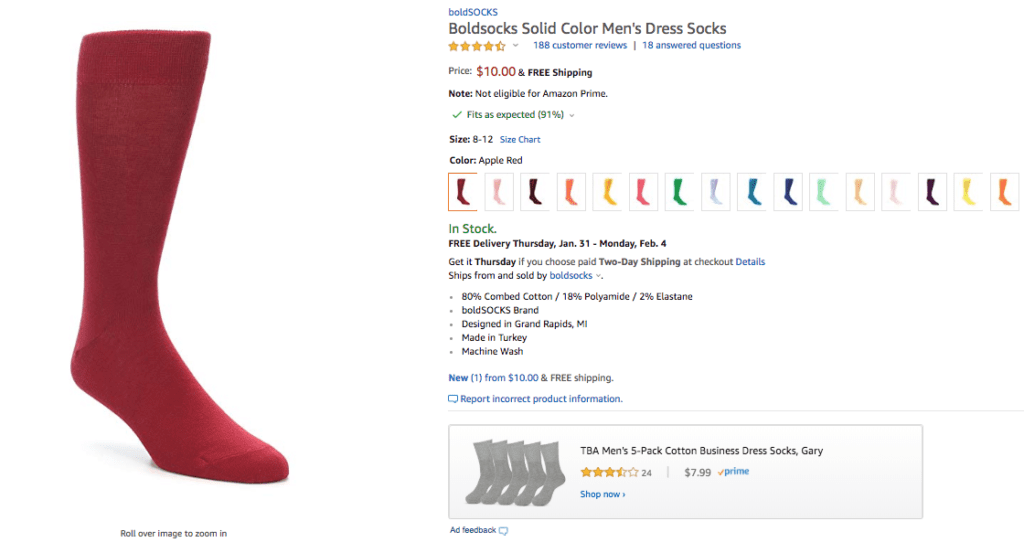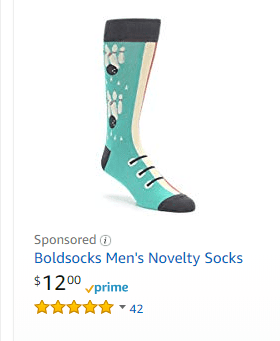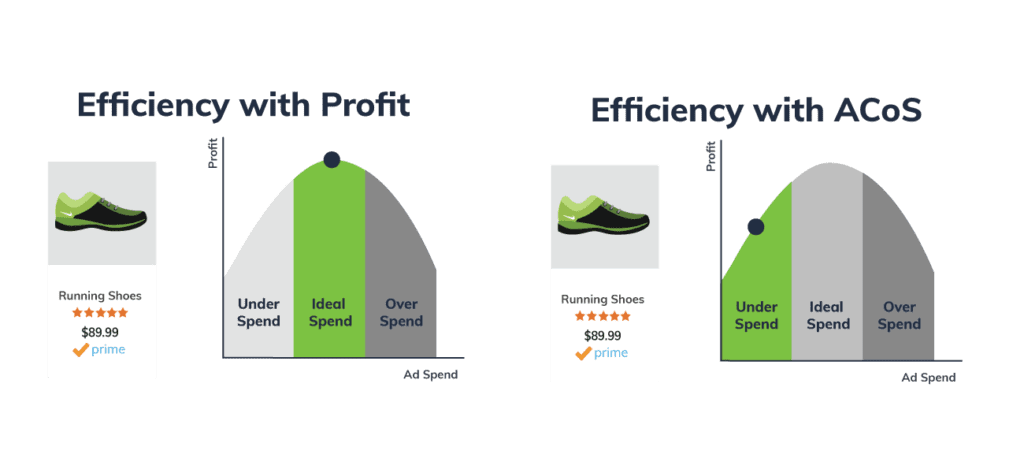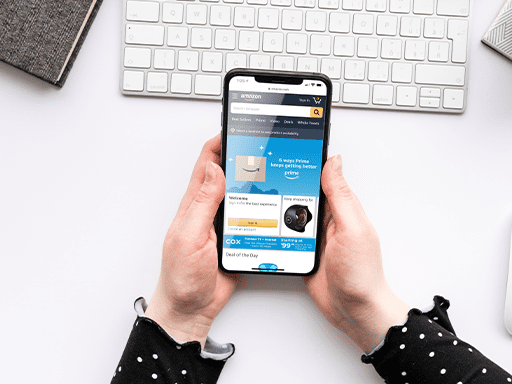

1. Segment by Product
Segmenting your campaigns wisely is the first step toward building a successful Amazon campaign. While it’s definitely easier to put all your products into one ad group, you’ll miss out on valuable information and money by doing so.
Imagine you sell socks on Amazon. If you have all of your products in one ad group, the performance data will all blend together — you won’t know which products are running profitably, and which ones are draining spend. Take the extra time to categorize each of your products so that you’re maximizing spend and tracking your best-selling products effectively. Ideally, you want to segment these products by available margin, in addition to any other attributes that make sense. For high volume products, it may even make sense to put each one in their own ad group to help direct spend to them.
This is especially helpful for seasonal products. By segmenting according to peak season, you can ensure those products are not spending money out of season by adjusting their performance based on the time of year.

2. Segment Keywords
Segmentation makes sense for products, and it makes sense for keywords too. We often see advertisers put broad and exact match terms together, but those categories target very differently. This makes it extremely difficult to bid effectively and to spend the right amount of money to acquire a sale while still retaining the maximum profit. You should have different ad groups for different match types, in addition to segmenting according to the category or other attributes.
To start, segment your queries by exact match, phrase match, and broad. Raise the bid amount for exact match keywords. Since they’re more likely to convert, they’re usually a better investment over time! Search term length matters too – although long-tail keywords are profitable on Google, they can harm Amazon campaign performance as most searches on Amazon are short-tail.
Phrase and broad match keywords will gather more impressions and most likely cost more.
Customers searching for generic terms are less likely to convert, so don’t waste spend on broad queries. Take the time to find out which broad terms are worth the money and say goodbye to the rest.


3. Add New Products
Adding new products to your ad campaign can be an arduous task, especially if you’re a large company with a quickly expanding product line. However, it is a necessary step to optimizing your Amazon campaign. Unadvertised products mean untapped potential for profit. Without proprietary tools, Amazon makes it a challenge to add hundreds of products. That’s why at Omnitail, we’ve developed in-house tools that allow us to add hundreds of products in a fraction of the time. With or without proprietary tools, advertising all of your products is worth your time for the added profit it earns! Want to take your products to Google Shopping? Learn more about how to effectively segment PLAs here.


4. Add New Keywords
Managing keywords is just as important as adding new products. In order to find out which keywords to add, mine your Amazon Ads reporting section to see the most productive key phrases. From there, segment your keywords correctly and stay on top of adding new keywords when you add new products. Additionally, it’s important to keep up with products you’ve been selling for awhile. Return to those products to see which keywords are under-performing and get rid of them!


5. Use Profit as a Metric Not Just ACOS
Profit, unlike ACOS (Advertising Cost of Sales), takes into account costs like commission to give you a more accurate representation of your account performance. Odds are, you’re overspending. If you’re selling products fulfilled by Amazon, the added cost is usually higher. Using profit, added costs such as this will be factored in. That’s why we’re Omnitail: The Profit-Driven Online Marketing Agency, because profit is the only metric that gives you those insights.
For example, let’s go back to selling socks. You make $10 selling socks. If you spend 4 to sell the socks, you get a 40% ACoS which sounds reasonable! However, if you factor in profit which takes into account 30% COGS and 15% commission, you’re barely breaking even. Learn more about calculating Contribution Margin.

Build the Best Amazon Ads Structure
The basics of building Amazon campaigns and managing accounts are simple, but in practice they can be time consuming because of Amazon’s lack of automation. For smaller companies, adding products and keywords may be a breeze, but as product lines grow, the task becomes more of a challenge. These steps are necessary to getting the most out of your Amazon account though. Need help managing your Amazon accounts? We’re here to assist you. See how our in-house tools can streamline your Amazon Ads campaign today and get a FREE analysis of your account!








